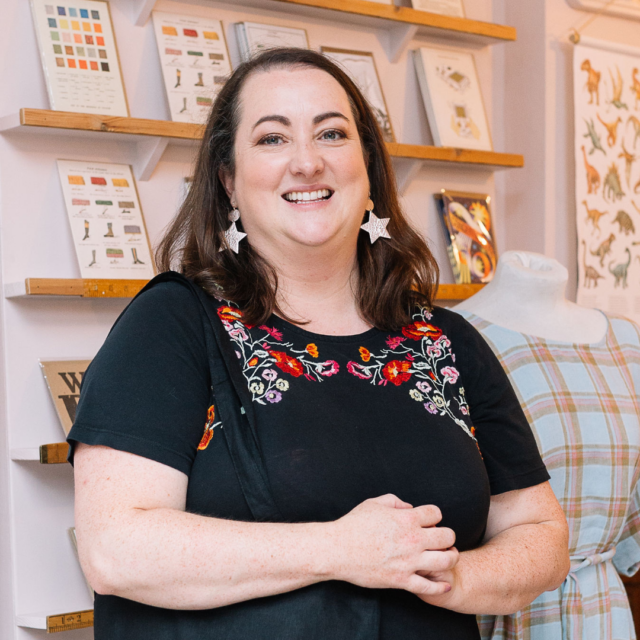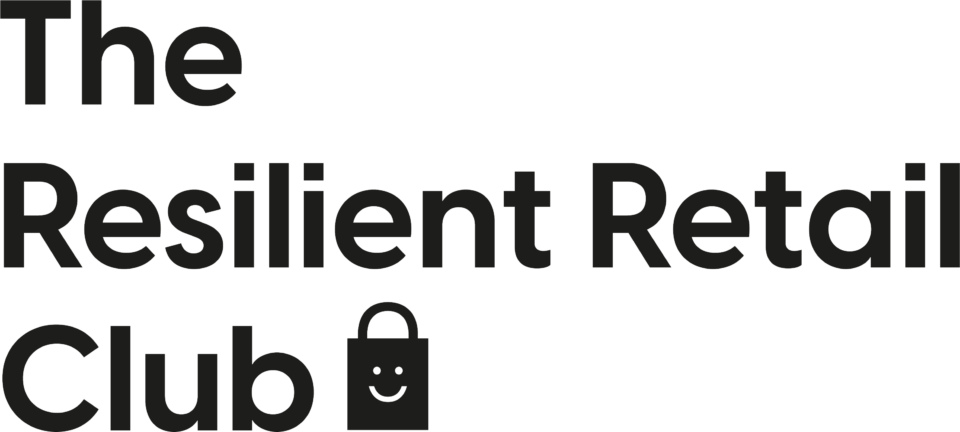184: Celebrating One Year of Tame Your Tiger
Welcome to episode number 184 of the resilient retail game plan podcast. Hi everyone. My name is Catherine Erdly. I’m your host as well as the founder of the resilient retail club. That is my membership group and mastermind for product businesses. Head over to resilient retail club to find out more and.
If you head over to retailroar.co.uk, you can find out about my brand new free online summit, but I’m so excited to tell you more about it is happening from the 29th of February to the 1st of March this year. And we have got. The most amazing lineup. I wrote myself a list of the dream product business founders that I wanted to get onto the summit and I pretty much have got all of them.
So head over to retailroar.co.uk. You’re going to see people like Lucy Greenwood, co founder of Lucy & Yak. We have got Brie Read, founder and CEO of Snag Tights. Jo Tutchener Sharp, founder of Scamp and Dude and Eleanor Bowmer from Eleanor Bowmer limited. As well as so many more. I think we’re up to about 20 confirmed speakers.
So that’s found as an expert and you will not want to miss out. So head over to retailroar.co.uk grab your free slot. It is, as I said, a hundred percent free to sign up. This is the biggest gathering of online retail and independent retail founders in one place, founders and experts. This is the best event that you can head to for e-commerce brands and retailers. So don’t miss out go over to retailroar.co.uk
And how appropriate that we are talking today about one year of tame your tiger, so we’re keeping with the So that’s Retail Raw, R O A R, like a tiger. And it’s launching to coincide with the one year anniversary of my book, Tame Your Tiger, How to Stop Your Product Business Eating You Alive.
And what I wanted to do in today’s episode is just take a moment to really reflect back on the last year and talk a little bit about what it’s meant to me, to the business, to have this book out there into the world.
Welcome to the Resilient Retail Game Plan, a podcast for anyone wanting to start, grow or scale a profitable creative product business with me, Catherine Erdly. The Resilient Retail Game Plan is a podcast dedicated to one thing, breaking down the concepts and tools that I’ve gathered from 20 years in the retail industry and showing you how you can use them in your business. This is the real nuts and bolts of running a successful product business, broken down in an easy, accessible way. This is not a podcast about learning how to make your business look good. It’s the tools and techniques that will make you and your business feel good. Confidently plan, launch and manage your products and feel in control of your sales numbers and cash flow to help you build a resilient retail business.
I was reflecting back on what I wanted to talk about in this episode, and one of the things I wanted to touch on is some of the things that maybe surprised me.
And I think for me, one of the most unexpected and joyful things about the book has been the way it’s allowed me to reach people in a different way, collaborate people, and collaborate with people in a different way. So just to touch on some of the highlights for the book over the last year, obviously talking to people, having a chat with them, and then telling me that they’ve read it, that never gets old. Being tagged on Instagram when people are reading it, that never gets old either. I’ve had people telling me they’d asked for it as a birthday gift and then we’re digging in and I absolutely love that.
I’ve collaborated with lots of amazing people like Steph Douglas and Don’t Buy Her Flowers. We created a business owner a self care box which included a book as well as some amazing goodies which we had a competition for shortly after the book launched. I’ve also been able to talk about it at Spring Fair on the big stage there and introduce the book to everybody which was really exciting.
I collaborated with Indie Roller on their Joyful Start e-summit which happened earlier this year and it was a giveaway as part of a business book bundle with some other fabulous authors such as Lucy Werner and her Hype Yourself and Brand Yourself books.
I had a giveaway with Pedal as well, the amazing, market store membership and we gave away three copies.
We also gave a copy to everybody who came to the crafty fox creates conference that happened in September last year and the selling platform and so to shop, they even created their own bespoke versions that they had a version with their logo on and then Louise, the founder, she had written her own forward. And that was given out to all of their business club members. So that was super exciting as well.
And there are so many other examples as well, but I think that’s what’s been super joyful about writing this book has been allowing me to collaborate with other people. And as I said, it does not get old to have people come to me and say how it has helped them.
So just in case you’re not familiar with what the premise of the book is, if you have listened to the podcast, you may have a copy or you may be familiar with what it’s about. But effectively, what I talk about in tame your tiger is really digging into understanding when maybe your business is not as profitable as you’d like it to be.
I was working on it in 2022, so nearly two years ago now, and when people came to me and said, I’m making sales, but I’m not making as much money. I wanted to just be able to hand them the book and say, okay, we’ll just read this and it will explain why.
Catherine Erdly: So everything is built around this metaphor of the tiger. The idea is that your business can feel like a tiger. It can feel unpredictable. It can make you feel nervous, and it can feel like you don’t know what you don’t know, and it can make you feel out of control and unsure what to do for the best.
And that’s kind of where we start with this concept of it being a tiger business. And we also start from the idea that actually, you know, tigers are awesome, right? You know, not saying you don’t want to have a tiger. It’s about educating yourself about it and how to manage it and what to look at. So we talk about various different areas.
We talk about, first off, the first place you need to look if you’re trying to work out if you’ve got a tiger or is it a tabby cat? Is it something much more manageable?
So the first thing we look at is the bite. So the bite is looking at the amount of money that is taken out every time you make a sale by your expenses.
And I talk about the upper teeth, the in margin and the lower teeth, the out margin. So the upper teeth is all about the first time that you are buying something. So it’s effectively your theoretical margin. So if I have a mug. And it is 12 at retail and I’m buying it for 5. Assuming I’m VAT registered, you take the VAT off, you take away that 5 and you’re left with 5 profit of 10 excluding VAT. And that would be a 50 percent profit margin.
So when we’re talking about the teeth, we’re really encouraging you to look at those costs. And in an era of rising costs, when this is shifting all the time, it’s even more important than ever to make sure that you’ve got a handle on that in margin. And then the out margin or the bottom teeth, as I call it.
That is really about you understanding when you look at your historical data and you look at what you actually are selling, then what is that number? So, for example, this mug, if I, it’s a theoretical margin that if I buy it at 5 and the retail price is 12, that I should be making a 5 margin or a 50 percent margin. But that is just theoretical because if I actually sell this for 6 because I’m doing 50 percent off or I sell it for 20 percent off, or even 10 percent off because that’s my introductory offer, then my out margin is quite different to what the theoretical margin is.
So we talk about the importance of having a look at that and understanding what that is and understanding if over discounting is causing an issue.
What’s really interesting about this book actually, is that when it comes down to it, the bit that seems to have really resonated with people or made the most difference has been been the piece about stock management.
So stock is what I call the tail and it comes from a term in retail, which is that you’ve got your 80/20 rules. So you’ve got your 20 percent of products that is generating 80 percent of your sales. And then you’ve got your 80 percent of products that are generating your 20 percent of sales. And that is known as the tail.
And your job as a product business is to really minimize the amount of money that is in that tail. So my phrase that I like to use is the bigger the tail, the bigger the tiger. So what we’re looking at here is we’re looking at how much stock you’ve got in your tail and then also just how much stock you’ve got overall and talking about the importance of making a stock plan and then the importance of actually clearing through your stock if it’s not selling and how to really execute a sale correctly, a stock clearance sale correctly to work within your objectives.
And it’s interesting because. Because people definitely do talk to me about the, the bite. They talk to me about having looked at that and reviewed it. And it’s made a difference to them because they’ve been able to identify either over discounting or maybe they actually needed to do some work on their margins.
But I have to say the stock piece has been the piece that I have had the most feedback on. And people have really seen a shift in their business when they’ve created a stock plans for themselves and created that discipline really of hitting those stock goals and clearing as, as they go. And, it’s really fascinating because I am a huge believer in the importance of stock management when it comes to growing a profitable business.
I think it’s absolutely critical. So part of me is not surprised, but it’s just, it’s actually really nice to see that that has been something that not only has been the feedback I’ve got from people from reading the book, but also from the club members as well. So inside my membership group, the resilient retail club, we actually have a tame your tiger course.
So once I launched the book last year, my next task was to spend some time creating a course version of it. So if you’re a member of the resilient retail club, you can get access to the tame your tiger course with inside the membership. And what’s nice about doing it as a book first and then doing it as a course is that.
You can actually have explainer videos in the course, you can have templates, you can actually walk people through and so it’s quite in, it’s quite a different experience for club members to actually have that in a more visual form. So if you’re thinking this sounds really interesting, but you don’t absorb information through reading, which there are different types of learners, then you may find the visual aspect of having a video that you can follow along with, and then a template that you can follow along with. You may find that really useful as well, just to put it out there.
And as I said, that’s also been a really positive thing about doing the book is that then being able to create it as a course and having the feedback on that as well.
And so. It’s really is beneficial to to create that stock plan and it’s definitely been one of those things that said I’ve had the most feedback on and it’s really, yeah, really gratifying to see that it’s helped people.
So we talk about the bite, we talk about the tail, managing that tail, reducing the size of the tail, making sure that, as you said, the bigger the tail, the bigger the tiger.
And then the other piece is that we talked about how much you’re feeding the beast. And so that’s all about your breakeven analysis.
Another unexpected benefit of writing the book and then creating the course is that then inside my mastermind, where I’m working with people one to one, I’m also able to use the course materials and everything that I’ve created for the course as a part of writing the book and publishing the book.
I’ve been able to then use those materials to work with them. And I’d say again, that we do look at all of those different aspects. We look at their profitability. We look at building a stock plan and, build a lot of stock plans with clients actually. And then ultimately we are looking at the breakeven analysis.
So the idea of the stomach, how much you’re feeding the tiger. That really comes back to this idea of. How much are your expenses as compared to your costs and your sales and it’s been really super beneficial in terms of being able to have a look at Is the business model correct for your current level of sales?
And it’s not only that it’s not only useful to help understand that, but it’s also useful and helpful to understand. Number one, one of the biggest things that it does is it’s a really good illustration of the importance of your out margin, because you can really see how the higher your out margin, the less sales you have to take in order to cover your costs.
And it’s a really good way of showing that correlation super clearly so people can understand and it gives them the incentive to work on their out margin. And then the other thing that I really like about this is that it allows you to model if you want to add costs into the business. What does that mean for you?
What do you need to do in terms of sales to take those? So it’s very beneficial in terms of. Actually being able to get a really clear idea of if you want to add in additional staff, if you want to pay yourself more, if you want to take on premises, how is that going to impact your profile, your profit margin, the amount of sales that you have to take, and you can do all of that in a way that feels really controlled and you don’t have to almost do it and then see the impact it has on your business. You can model out what the impact is first.
So it’s been a really fabulous experience. I’m so glad I published the book It’s as I said, it never ever gets old Um, if you have read the book if you listen to this thinking, yes, i’ve read it. Please please please an amazon review is hugely, hugely beneficial.
I know I don’t need to tell you as a small business owner, how important reviews are, but they’re super important on Amazon. And I heard recently that you need about 50 Amazon reviews before they even show you or push you up their rankings. So I’m on about 18 at the moment. If you are able to head over and add to that, that would be absolutely amazing.
I read all of the reviews and I’m always so happy and grateful to get them. So I wanted to share a few with you in case you’ve not read the book and you’re thinking, should I give this a go?
I think one of the most gratifying things about the reviews is people talking about how easy it is to understand. And that was very much my intention when I wrote it was I wanted it to be clear and I wanted it to be simple and I wanted people to be able to engage with it because fundamentally I knew that I was writing a book about numbers for people who maybe would not consider numbers as their forte.
So I wanted to make it engaging. So we have here, “A must read for product business owners. Fantastic book, well written. Easy to understand and the most impactful but lighthearted business book that I have read.” So I love that because I wanted to make it engaging. As somebody said further down, they said, “I was so pleasantly surprised when I read this book about how relatable each of the examples are.”
Now, I should say as well, this book is absolutely full of case studies. We’ve got three main characters. We’ve got Sam the shopkeeper. We have got Irene, the illustrator, and Emmanuel, the e-commerce seller. And the stories go all the way through the book, even if you’re not sure which issue you might have, you might recognize yourself in some of these examples and then be able to kind of get a sense of where you need to focus on.
Someone else says, “I highly recommend this book to anyone wanting to look at their business through the lens of a retail expert. Easy to read, simple and manageable steps and offers a great understanding of where to and how to improve areas in your business. Fabulous book, so much great, no nonsense advice.
And, that’s really, what I wanted to do, what I set out to achieve is help people. Said someone else here really helped me put my business finances into perspective so that I can formulate the best plan to move forward and keep making improvements. So that was the dream when I started this process of writing the book, that was really everything that I wanted to do with it was to give people the power in their own hands. And, to really be able to make those decisions and to feel empowered. It was really about, empowering people.
And, my favorite actually. Comes from a club member. It’s not a review. It was an email that was sent to me from a club member and basically to cut a long story short, she wrote me this most amazing email saying thank you for writing the book.
And then in the email she details how she made herself a stock plan. She really committed to it. She really focused in on it. She cut back her expenditure to make sure that she hit her goal every month. If she needed to reorder something, she was really critical about what that order was. She was able to clear through some slower moving stock.
And as a result, her profits were up over 500%. And It was so clearly tied into the fact she’d spent less on stock. You could really see in the numbers that it was the fact that she just spent less on stock. And as a result, she had a much, much more profitable year. And that for me, when I got that email, I was like, this is the reason I wrote the book.
This stuff works. And she says, well, one of the lines is she said, you know, it’s great. You know, it’s really great, but Creating marketing plans is all very lovely and exciting, but getting your hands dirty under the proverbial bonnet is where the money really is. And so I just want to say thank you so much to everyone who’s given me such lovely feedback on the book.
That is, I believe that’s true, that’s where the money is in your business is improving things like your stock management, having a look at your profit margins. It’s not the most glamorous stuff, but it is absolutely crucial. And if you’re feeling out of control, like you might have a tiger in your business that is going to eat you alive.
Please take a look at the book. If you’ve enjoyed the book and you can spare a moment to leave me a review, I would absolutely hugely appreciate it. And go to retail raw. co. uk as part of the one year celebration. Now we’ve tamed the tiger. Now we’re going to make it roar. Go get your free ticket to the most amazing lineup of speakers for this free online summit. Come along and join us here from the likes of, as I said, we have got Wuka who, were responsible for getting the VAT removed from period pants after a multi year campaign. Ruby who founded that is going to be talking about running a campaign alongside running a product business.
And so many more amazing speakers. We just scratched the tip of the iceberg, um, scratch the surface. I’m mixing my metaphors, but go check out retail raw. It is the most fabulous online summit. It’s a great celebration of one year of tame your tiger. Go get the book if you haven’t already.
And if you have, you can leave me a review. I would absolutely love that. I’ll see you next week.







